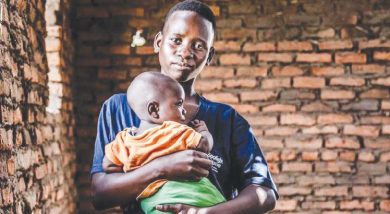Counting cost of unsafe water
Elsewhere, women are protected from walking late in the night as it is considered risky. But in Mujiwa Village, Traditional Authority (T/A) Njema in Mulanje, it is not unusual to see women walking as early as 2am.
It is not that they enjoy it. But the poor access to water in the area forces the women to source it from unprotected sources such as rivers and streams.
The struggles the women go through are vivid in the wee hours of the day. By 2am, most paths are busy with women carrying buckets of water collected from Nanchidwa River. The river, whose source is Mulanje Mountain, has been a reliable source of water for years as it hardly dries up. However, Village Head Mujiwa believes that with this year’s drought, the river may dry up.

Mary John, one of the women who have fetched water from the river since her childhood days, explains her ordeal: “We have to draw water late in the night or early morning. If you delay, you will drink dirty water.”
She says apart from drinking, villagers use the river for bathing and washing, while domestic animals also benefit from the same water source.
“It has been over two decades now since the village had tap water. These days, we all rely on the river,” says John.
The tap water John is talking about was a government project which tapped water from Mulanje Mountain to various points in the village. The pipes supplied water to people living between T/A Nkhumba in Phalombe and Muloza Border in Mulanje.
However, the system collapsed in the mid 1990s as did the boreholes that Mujiwa Village later benefitted from non-governmental organisations.
Mujiwa Village is not an exception when it comes to poor access to potable water. Some remote areas in the country face the same problem.
For example, T/A Maseya of Chikwawa says people in his area drink from unsafe wells, streams and rivers and that the water is salty.
Similarly, Pastor Owen Mwafulirwa of T/A Mtwalo in Mzimba is on record as having told The Nation of January 6 2016 that waterborne diseases are common among villagers in the area due to unclean water use.
In 2012, the World Bank estimated that Malawi loses K8.8 billion due to poor access to water, sanitation and hygiene services. Each year, K6.6 billion is lost to premature deaths as approximately 8 800 Malawians, including 4 500 children under five, die from diarrhoea. Nearly 90 percent of the deaths are attributed to poor water, sanitation and hygiene.
However, the 2012 Joint Monitoring Programme (JMP) shows that Malawi has made progress in increasing access to safe and clean water from around 61 percent before 2000 to 83 percent by 2012 and 89 percent by 2015. Produced by Unicef and the World Health Organisation (WHO), JMP further says 95 percent of the urban and 80 percent of the rural population now have access to safe water. This represents an average of 87.5 percent.
Ben Chakhame, executive secretary of Water Services Association of Malawi (Wasama), argued in an earlier interview that the statistics in most reports do not really represent the facts on the ground where some of the water sources being counted are not working.
“Well, some quarters argue that we have not achieved the 80 percent when they look at other areas. The figure is an average as such you can see that other areas may have 100 percent access and others less,” says Chakhame.
Chief Maseya is one of the people that do not believe the figures.
“Water sources such as boreholes are expensive to sustain. That is why most of the boreholes we got in my area are not functional,” he argues.
The JMP shows that 33 percent of the population relies on shared water facilities while eight percent depend on unimproved sources.
Dumisani Botolo, a water and environmental specialist, says there is need to ensure each village owns a water source. He argues that most water boreholes broke down quickly due to over use and beneficiaries’ reluctance to contribute to their maintenance.
Goal Six of the Sustainable Development Goals (SDGs), adopted in September last year, advocates for access to clean water and sanitation for all by 2030.
“We need to reconsider our activities on management of catchment and water resources otherwise, we stand to miss out on this target,” says Chakhame. n





